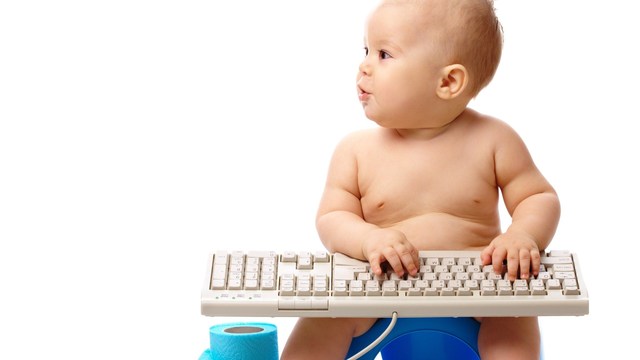 Serhiy Kobyakov/PhotoSpin
Serhiy Kobyakov/PhotoSpin
It is commonly believed that, on average, boys tend to start potty training a little later and can take a little longer than girls. (2) No one really knows why. Perhaps it’s because boys are, on average, developmentally a few months behind girls, or that girls are more conscious of needing to be clean and dry.
When it comes to potty training, though, there is no set rule that will work every time at precisely the same age or at the same point of the process. “[E]very child is different and the most important thing is to focus on when your child is ready and to train in the way that best suits them – regardless of gender.” (2)
Is my child ready for potty training?
Most children between the ages of 24 and 27 months are ready for potty training although it’s not unheard of for children younger than 24 or closer to 36 months to begin training or even be done training. (3)
The key factors are each child’s level of physical maturity and the readiness skills they need for successful toilet learning. These appear between 18 and 30 months in both boys and girls.
Girls are, on average, are trained by 29 months and boys by 31 months. Remember, these are averages, not the rule or “must be trained by” date. “Ninety-eight percent of kids are trained by 36 months of age.” (3)
You can learn plenty of great toilet training readiness skills at the University of Michigan Health System website here.
While the average time frame for completion of toilet training is three to six months, children may continue to urinate at night until around the age of five. Most children (90 percent) do stay dry all night by the age of six.
It is common for children to experience toilet training regression or setbacks usually related to stress or a simple assertion of child’s individuality and need for control.
This is temporary and should be addressed in a positive, rather than punitive manner. Punishing your child may cause the regressive behavior to continue longer and actually make your child more afraid to go.
In some cases, if potty training progress is really at a standstill, it may be a good idea to put off toilet training for a week or month or two. Wait until your child again shows interest or desire to wear big boy or big girl underwear.
4 tips for successful potty training
Potty Training Tip 1
Prepare your child for the experience by reading stories, watching TV programs, and having an “open door” bathroom policy. Children learn by watching and imitating those of the same sex. By watching you, they learn that it is normal and safe. Talk about the feeling of having to go and use positive potty-related language.
Potty Training Tip 2
Let them have a sense of control by allowing them to choose their potty and step stool if they choose the toilet-top version. The seat needs to be sturdy and your child’s feet should sit firmly on the floor to help the potty-related muscles to relax.
Potty Training Tip 3
Have an encouraging attitude. “Never pressure or force your child. Praise your child for every step in the right direction ... Keeping a positive tone and using lots of praise will work much better than punishing, criticizing or shaming your child.”
Potty Training Tip 4
Practice. “Let your child get used to the potty seat without any other expectations. Allow your child to sit on the seat fully clothed, perhaps looking at a book or playing with a small toys.” (3) “Praise ... for cooperation with sitting, even if they don’t go.”
Sources:
1. Potty Training: Girls vs. Boys. Kowal, Jessica. Parenting.com. Web. Accessed: May 22, 2014.
http://www.parenting.com/article/potty-training-girls-vs-boys
2. Potty Training Girls and Boys – in the beginning. Huggies. Web. Accessed: May 22, 2014.
https://www.pottytraining.co.uk/starting-out/boys-v-girls
3. Toilet Training. University of Michigan Health Systemt. YourChild Development and Behavior Resources: A Guide to Information & Support for Parents. Web Accessed: May 22, 2014.
http://www.med.umich.edu/yourchild/topics/toilet.htm
Reviewed May 21, 2014
by Michele Blacksberg RN
Edited by Jody Smith





Add a CommentComments
There are no comments yet. Be the first one and get the conversation started!